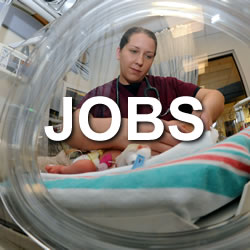Movement Disorders
Even the darkest night will end and the sun will rise - Victor Hugo

image by: Vasilev_Ki
HWN Suggests
Things I’ve Learned From My Disorder: Relationships and Happiness
Throughout the last few months I have had to learn to cope with this strange disorder. I am at the point now in my life where I can say that I hate everything about the disorder. It can be at its least a great inconvenience and at its worse a whirlwind of pain that completely immobilizes me. But I can say there have been positives to having this disease. It has taught me a great many things with one being the importance of relationships with friends, significant others, and family.
I will be the first to admit that prior to this disorder I was living my life very selfishly. I was trying to do everything by myself. I didn’t see the need for other human beings in my life and I really…
Resources
 It’s time to find new targets for brain diseases instead of just pursuing old ones
It’s time to find new targets for brain diseases instead of just pursuing old ones
The appeal of pursuing incremental improvements with medicines that act on old, familiar targets is understandable. Pursuing known targets and mechanisms is less daunting to investors and seems less risky to pharmaceutical company executives. But repeatedly filling drug-development pipelines with agents that act on the same handful of CNS targets has done little to help patients with neurodegenerative diseases. Our industry needs to accept, if not embrace, risk taking with new drug targets.
Deep brain stimulation for movement disorders
Deep Brain Stimulation (DBS) has evolved into an effective therapeutic agent for movement disorders such as Parkinson’s Disease (PD), Essential Tremor (ET), and Dystonia. The stimulation is delivered through electrodes that are stereotactically implanted by a functional neurosurgeon normally while the patient is awake.
Patient Shares Journey with Movement Disorder
A patient talks about her personal and challenging journey with dystonia and how her life changed after being treated with deep brain stimulation by Dr. David Barba at the UC San Diego Movement Disorder Center.
Wiring the Brain, Literally, to Treat Stubborn Disorders
Deep brain stimulation, sometimes called a pacemaker for the brain, has helped halt tremors in more than 100,000 patients with Parkinson's disease and other movement disorders since 1997. Now, researchers are reporting encouraging results using the procedure for psychiatric conditions as well.
 Things I’ve Learned From My Disorder: Relationships and Happiness
Things I’ve Learned From My Disorder: Relationships and Happiness
Throughout the last few months I have had to learn to cope with this strange disorder. I am at the point now in my life where I can say that I hate everything about the disorder.
Functional Movement Disorder
A functional movement disorder means that there is abnormal movement or positioning of part of the body due to the nervous system not working properly (but not due to an underlying neurological disease).
Movement Disorders
Movement Disorders is the leading journal on Parkinson's disease, neurodegenerative & neurodevelopmental disorders & abnormalities in motor control.
Movement Disorders Centre
Our centre focuses on treatment of patients with neurological movement disorders, including Parkinson Disease, Dystonia, Tremor, Torticollis and many related diseases.
Benign Essential Blepharospasm Research Foundation
The Foundation is the only organization solely dedicated to finding the cause and a cure for blepharospasm and Meige. It is a volunteer non-profit organization that relies entirely on public and private charitable donations.
Canadian Movement Disorder Group
To support a network of Movement Disorder Clinics across Canada to provide the appropriate facilities to treat patients with movement disorders, and to conduct clinical research trials in movement disorder patients.
FND Hope
We have joined forces with others in a global network to advocate best practices for ethical patient centered care for FND. We aim to change how functional symptoms are understood and defined globally and work in a concerted manner to advocate for the men, women, and children who have had their lives turned upside by physical and often debilitating functional symptoms. FND Hope and affiliates provide current information and dispel biased stereotypes and myths.
International Essential Tremor Foundation
The mission of the International Essential Tremor Foundation (IETF) is to provide global educational information, services, and support to children and adults challenged by essential tremor (ET), to their families and health care providers, as well as to promote and fund ET research.
International Parkinson and Movement Disorder Society
The International Parkinson and Movement Disorder Society (MDS) is a professional society of clinicians, scientists, and other healthcare professionals who are interested in Parkinson's disease, related neurodegenerative and neurodevelopmental disorders, hyperkinetic movement disorders, and abnormalities in muscle tone and motor control.
American Association of Neurological Surgeons
Patient information covering various disorders.
MayoClinic
The term "movement disorders" refers to a group of nervous system (neurological) conditions that cause you to have abnormal voluntary or involuntary movements, or slow, reduced movements.
MedlinePlus
Imagine if parts of your body moved when you didn't want them to. If you have a movement disorder, you experience these kinds of impaired movement. Dyskinesia is abnormal uncontrolled movement and is a common symptom of many movement disorders. Tremors are a type of dyskinesia. Nerve diseases cause many movement disorders, such as Parkinson's disease. Other causes include injuries, autoimmune diseases, infections and certain medicines. Many movement disorders are inherited, which means they run in families.
Merck Manual
Every body movement, from raising a hand to smiling, involves a complex interaction between the central nervous system (brain and spinal cord), nerves, and muscles. Damage to or malfunction of any of these components may result in a movement disorder. Different types of movement disorders can develop, depending on the nature and location of the damage or malfunction...

Introducing Stitches!
Your Path to Meaningful Connections in the World of Health and Medicine
Connect, Collaborate, and Engage!
Coming Soon - Stitches, the innovative chat app from the creators of HWN. Join meaningful conversations on health and medical topics. Share text, images, and videos seamlessly. Connect directly within HWN's topic pages and articles.













